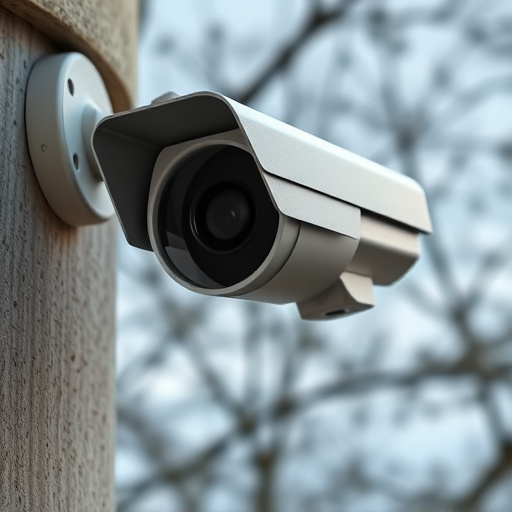Fake CCTV cameras deter crime through psychological impact and perceived surveillance. Strategically place them in high-traffic areas, visible locations, and common security spots to mimic real camera angles and enhance overall property safety. Blending decoy cameras into surroundings reduces their detectability while maintaining aesthetic appeal. Optimal placement with minimal peering points maximizes realism, impacting potential intruders' behavior and enhancing deterrent effectiveness alongside other security measures.
“Enhance your home or business security with strategic dummy surveillance camera placement. While real cameras offer undeniable deterrence, fake CCTV can provide a cost-effective alternative for crime prevention. This article explores effective tips for maximizing the dummy camera’s impact. From understanding its deterrence to choosing optimal placements and integrating with your environment, these strategies ensure authentic visualization. We also discuss testing visibility and minimizing peering points, all crucial aspects of leveraging fake surveillance cameras as a powerful deterrent.”
- Understanding Fake CCTV Camera Deterrent Effectiveness
- Choosing Placement for Maximum Visual Coverage
- Mimicking Real Camera Angles and Positions
- Integrating with Environment for Authenticity
- Testing Visibility and Reducing Peering Points
Understanding Fake CCTV Camera Deterrent Effectiveness
While dummy surveillance cameras are a popular choice for deterring crime, their effectiveness as a deterrent is often misunderstood. Simply placing a fake camera in a visible location can significantly alter criminal behavior. Studies have shown that the mere presence of CCTV signage, even if the cameras themselves are non-functional, can reduce theft and vandalism. This psychological effect is key; criminals are less likely to target areas they perceive as under surveillance, creating a safer environment for businesses and residents.
However, it’s crucial to remember that dummy cameras alone may not be enough to deter all types of crime. Their greatest impact lies in combination with other security measures like proper lighting, fencing, alarms, and regular patrols. Understanding the limitations and leveraging their psychological advantage allows for a more strategic approach to enhancing security through both real and simulated surveillance technology.
Choosing Placement for Maximum Visual Coverage
When selecting dummy surveillance camera placement, the primary goal is to achieve maximum visual coverage for a deterrent effect. Positioning fake cameras strategically can significantly enhance security measures. Consider areas with high foot traffic and visible locations where potential intruders might attempt unauthorized access. For example, placing dummy cameras near entry points, such as doors and windows, sends a clear message that your property is under surveillance.
The visual deterrence of fake CCTV cameras goes beyond just the physical presence. Their strategic placement can also help in reducing crime by making it more difficult for perpetrators to act unnoticed. By simulating a comprehensive security system, these dummy cameras can create an illusion of constant monitoring, encouraging potential criminals to opt for easier targets. This smart approach leverages the power of visual deception to bolster your property’s overall safety.
Mimicking Real Camera Angles and Positions
Mimicking real camera angles and positions is a strategic step in enhancing the deterrence effect of dummy surveillance cameras. While these fake cameras don’t capture actual footage, their visual presence can significantly alter criminal behavior. By strategically placing them at angles that mimic genuine security equipment, you create an illusion of constant observation. This simple trick often discourages potential perpetrators from targeting your property, as they may perceive it to be under close surveillance.
The positioning should replicate common camera spots found in many public and private spaces. For instance, mounting dummy cameras on walls at eye level or slightly above, mimicking real CCTV coverage, can deter theft or vandalism. Additionally, placing them near entry points, such as doors or windows, reinforces the message that your property is under constant watch. This tactic leverages the psychological impact of visual deterrence, making it an effective measure to enhance overall security without actual camera surveillance.
Integrating with Environment for Authenticity
When strategically placing dummy surveillance cameras, one key aspect to consider is their integration with the environment for authenticity. These fake CCTV cameras should blend seamlessly into their surroundings to effectively deter potential criminals. Opt for realistic designs that match the style of existing security equipment in the area. For instance, choosing weather-resistant and durable dummy cameras ensures they can withstand outdoor elements without drawing unnecessary attention.
By integrating these fake cameras into the environment, you enhance their deterrent effect. Criminals are less likely to recognize them as decoys, thus increasing the overall security posture of the location. This approach allows for a subtle yet powerful presence that discourages illicit activities while maintaining an aesthetically pleasing and natural look. Remember, the goal is to create an atmosphere where criminals feel observed without actually revealing the presence of active surveillance systems.
Testing Visibility and Reducing Peering Points
Testing visibility and reducing peering points are crucial aspects of optimizing the deterrent effect of dummy surveillance cameras. Place the fake cameras in locations that offer clear, unobstructed views of targeted areas. This ensures their realistic appearance and maximum impact on potential intruders. By positioning them strategically, you can minimize shadows and blind spots that might hide individuals or activities.
Additionally, limiting peering points—areas where someone could potentially peer through windows or gaps to see if a camera is real—is essential. Installing dummy cameras in directions facing walls, fences, or other obstructions reduces the risk of peeking. This further enhances their deterrent effectiveness by making it harder for criminals to anticipate or bypass security measures, thereby creating an illusion of constant surveillance.
When strategically placing dummy surveillance cameras, understanding their deterrence impact is key. By choosing locations that offer maximum visual coverage, mimicking real camera angles, integrating with the environment for authenticity, and testing visibility to minimize peering points, you can significantly enhance security without breaking the bank. These tips ensure that your fake CCTV cameras serve as an effective deterrent, sending a clear message to potential intruders.
